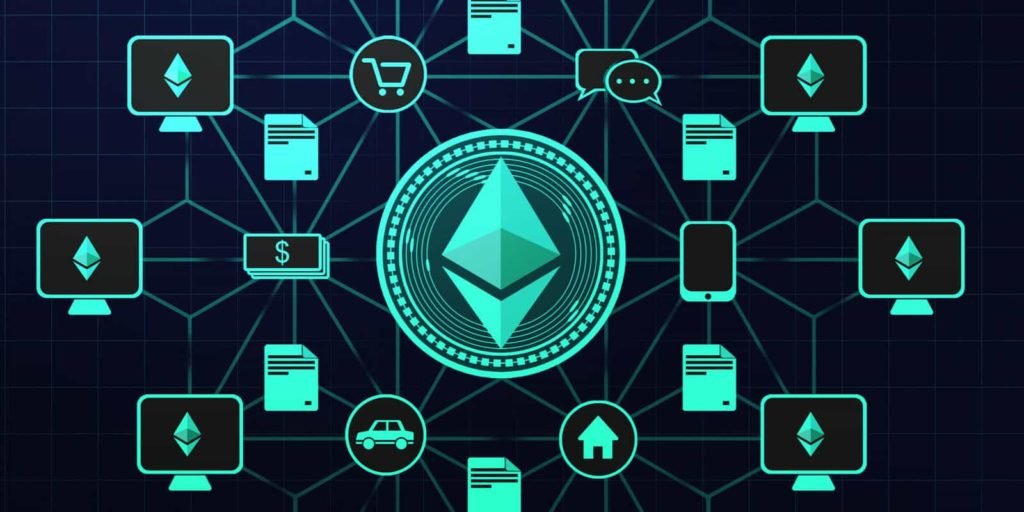Decentralized applications will help blockchain bring more functionality

Decentralized apps function like standard web apps, but the foundations of DApps are different. While most apps come from companies or other centralized sources, dapps come from peer-to-peer networks or team efforts.
Build decentralized applications. They function like a standard web application, but the foundation of the DApp is different. While most apps come from companies or other centralized sources, dapps come from peer-to-peer networks or team efforts.
Currently, most dapps are built on the blockchain network. These networks provide a guaranteed foundation that supports decentralization for those who want to develop DApps. Most blockchains have governance methods that allow themselves to be decentralized, so building dApps on the blockchain network makes sense for these people.
Like the backbone of a blockchain network, many dapps strive to maintain their decentralized nature. To this end, many DApp developers focus on keeping their applications open source, secure, and useful.
In order to remain open source, many DApps have public records of the application’s code and transactions. Since most DApps development company sit on top of the blockchain, you can always look at the blockchain’s ledger to see what transactions are happening inside the DApp. Additionally, many dapps maintain a GitHub of the app’s code, so users can go inside the app and make sure everything looks good.
DApps vs. Web Apps
As a design framework, DApps have not been around for long. Ethereum is the first blockchain developed specifically for things like DApps, which means the concept has been around for less than a decade. Therefore, developers need to spend some time figuring out whether a web application or a DApp design is more suitable for their services.
Advantages of DApps over Web Apps
There are many benefits to building decentralized applications over centralized ones. Without a reason to do so, there wouldn’t be so many people trying to innovate in this field of design.
The main reason for building DApps is that they are difficult to close. Decentralized applications are run on networks that could not entirely owned by one person or group. When you expand your hosting capabilities on the Internet, you have the potential to create connection points all over the world. It is very difficult for something that spreads to disappear offline.
Plus, when you spread something across the globe like this, you open up a time frame for something to run at any time of day. Apps linked to other apps or services, if not running 24/7, basically don’t work outside of business hours.
You can log in to the bank’s web app or mobile app to submit a transfer request, but the request may not be completed until the next business day. Something more decentralized will work as long as someone is there to host the network.
Finally, many dapps integrate with the blockchain ecosystem. These systems are open source and there are active communities developing blockchain networks. Tying an application to these ecosystems will make the application open to anyone with a wallet on the chain, DApps Development Solutions no matter what hardware they have or what operating system they use.
Disadvantages of DApps over Web Apps
Despite the breakthroughs in recent years, DApps are not perfect. They have some bugs and shortcomings, which means that traditional web applications are better designed.
For example: most dapps rely on smart contracts or bits of code execute when conditions are met. These contracts can be hacked and exploited, leading to some serious damage if no one finds a problem in the public ledger or code repository.
Furthermore, dapps are almost similar to the early computer and internet era. Nothing is integrated or packaged into a nice UI, which means users have to have some technical knowledge to set up a DApp. Some of the services make this easier, but it’s still they not intuitive for most users.
Finally, users can be a disadvantage of DApps. Just like a DApp can run anytime the user is online, if no one is hosting the app, the DApp will slow down or stop working. If users don’t use or don’t want the DApp when it first launches, the DApp launch process can be difficult, preventing early users from having a good user experience.
By and large, DApps bring functionality to the blockchain in which they reside. While anyone can initiate a transaction between two wallets, smart contracts allow dapps to perform large numbers of transactions in a decentralized and efficient manner. Over time, we will see how this new vehicle for providing services to users works in ways other than financial transactions.